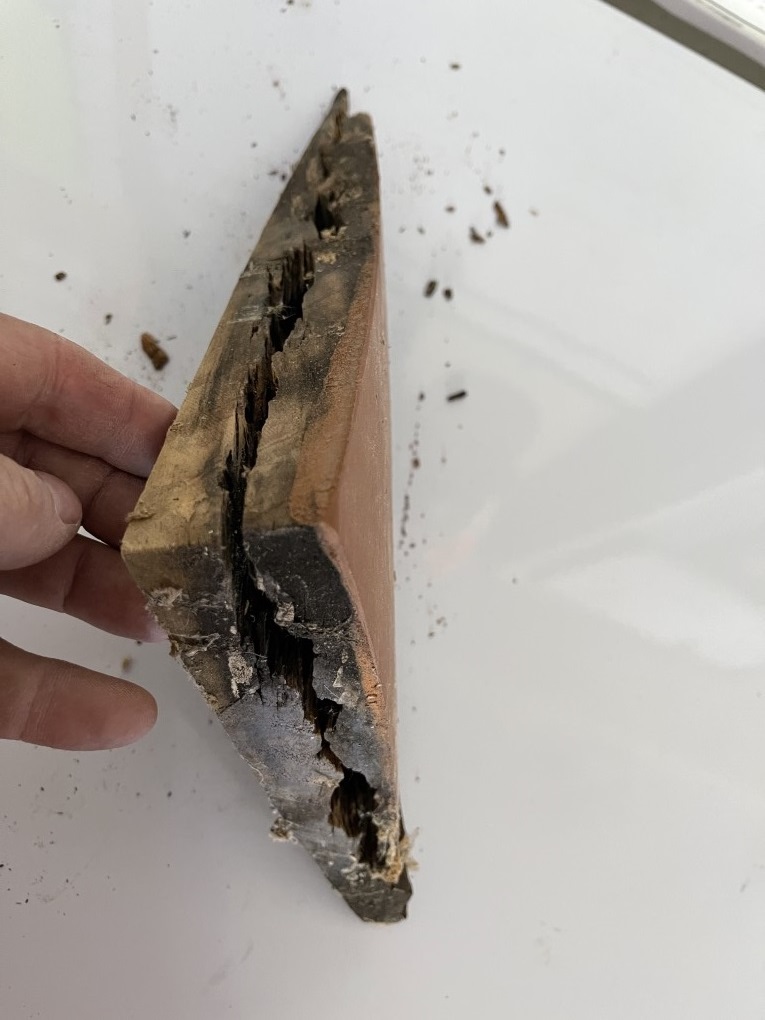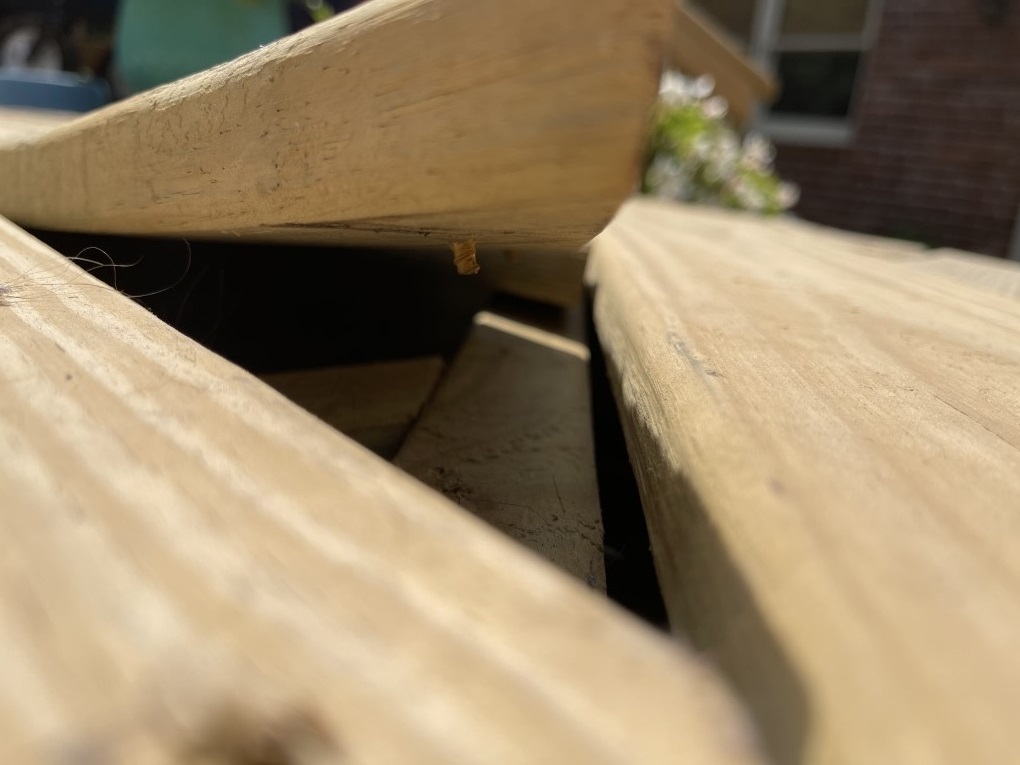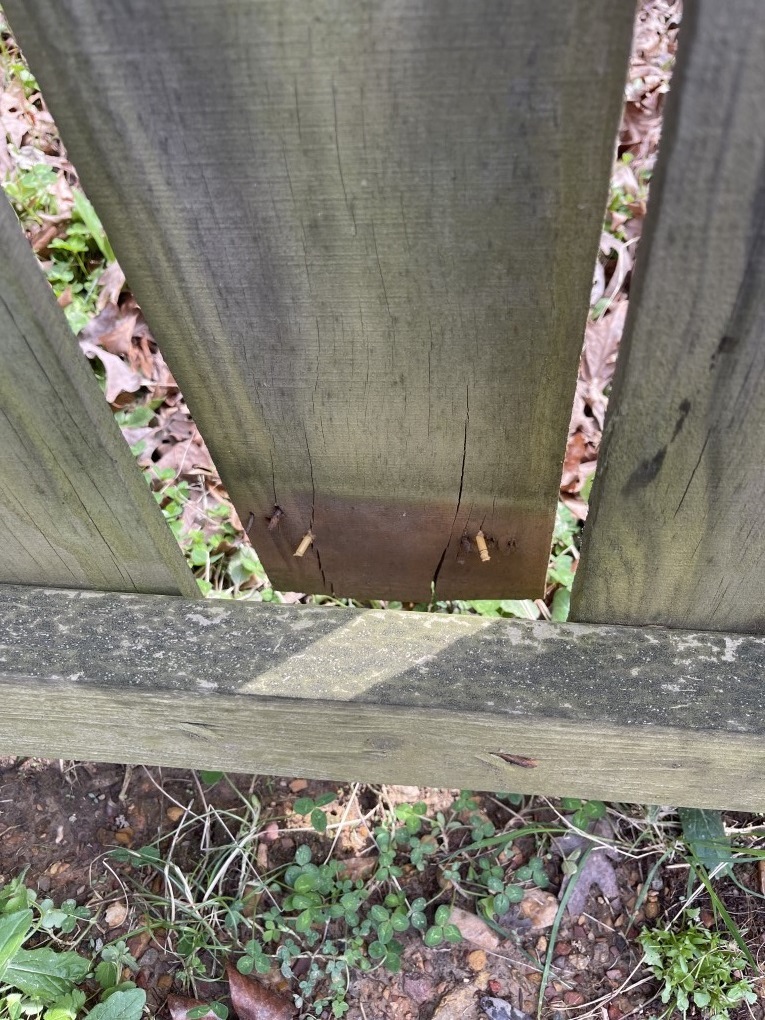We have treated pine decks we built over 30 years ago in Central Arkansas that are still standing and doing great! But that's because the pine was old-growth (they let it grow naturally & to maturity) and the treatment chemicals were different. The chemicals back then preserved the wood much better, but the EPA decided they were harmful to the environment (partially because one of the elements was arsenic).
Chemicals...
They thought the chemicals leached out of the wood over time and harmed the surrounding soil and plants. Well.... all of the decks I said are still standing are still standing because the chemicals must still be in the wood protecting it! And all of the clients' plants & landscaping have been doing great over all these years. So how bad has it really leached out???
I'm sure stories vary on this.
But they've changed the chemicals many times over the last 2 decades since they took the arsenic out. Each time they change it they say the wood should last 20 years, 25 years, or whatever they say. The problem with this is that they likely don't have wood treated with this exact configuration of chemicals that has sat in the weather that length of time. They do some tricks to "speed test" it.
And I don't trust any of it because after the change they made around 2007 to 2009 (sometime in there) decks and fences were rotting all over the place just 3-4 years later. I built a deck at my house in 2009, one at my mom's new house in 2010, and of course many for customers as I do each year. And by late 2012 I was falling through my deck and I started getting calls from people (my mom being one) telling me they had soft spots and full holes in their decks.
I never could get any answers when I'd call the treatment plants about it. But finally in 2015 one lumber company manager told me that "they" had it resolved and "they" all hoped there would be no further issues. While I haven't had anyone since then telling me their wood has rotted that fast, I am seeing that decks built in 2014 are starting to look like they may be getting close to needing to be replaced (that's just 10 years). And it seems the general population has somehow come to terms with the fact that decks now don't last but about 10-15 years. And even though there's nothing I can do about it, I'm still not satisfied with it!
So it becomes even more important to seal your new deck after it dries out and then again every 2-3 years to ensure you get the most life out of it as possible.
Here is a picture of a board from a deck built in 2009 that was only 4 years old when I tore it out and took this picture. You'd think it was UNtreated pine, but I can assure you it was treated:

This board and every board I've talked about here from that timeframe rotted from the inside. This was especially dangerous because a board could look fine and then you'd fall straight through it! Some people blamed the chemical composition, others blamed the process saying that it wasn't getting the chemicals deep enough into the wood. All I know is it was a waste of everyone's money.
Old Growth vs Fast Growth...
The other issue, which is probably worse, is the fact that around here in Arkansas we can't get any Old Growth pine anymore. Old Growth can mean trees that were from virgin forests (never harvested before) and were as large as a Southern Pine tree will get. Or it can mean the trees that come from forests that have been harvested before but each planting is allowed to grow at a natural rate until the trees are very large.
I'm guessing the demand became too great and they could no longer wait on the trees to grow to full size. First we started seeing all logging trucks running to the mill full of very skinny trees, many not even big enought to get a 2x8 out of it. And after a while we started seeing the trucks with slightly bigger trees, but even then they were barely big enough to get a 2x12 out of just the first section of trunk.
What they were doing was growing them faster. They do this mainly through genetically modifying them, and other ways which involve certain fertilizers and "growth-promoting treatments". While they also do things like select non-native pines for certain traits like growing fast, the real problem is that they don't let any of them grow to maturity. They send them to the mill as soon as they are (barely) large enough for the lumber they need. This may increase the rate of production, but it falls pitifully short of the quality you get in Old Growth pine. It also means many of the boards we buy have bark edge on them. Not only can bark edge cause issues with fitting boards together and having enough surface for another board to rest on, it looks hideous. And on a deck, especially one off the ground enough to walk under, you will see everything.
Two things cause the same problem, so it's magified. Problem one is that when a tree is grown faster, the growth rings are wider (fatter, further apart, etc.). This makes the lumber weak. Problem two is that when you don't let a tree reach it's prime, grown fast or not, the lumber will be weaker. It doesn't have to soak for decades in its maturity, but if it would be allowed to at least reach its prime that would help.
So we've got weak boards with wide growth rings. As any pine sits and dries it wants to warp and bow and curl. When it's weaker it wants to do those things even worse. We used to be able to use our ring-shank nails on everything and the deck would be fine for the life of it - we'd get no callbacks about boards popping up. But now, even when we use screws and employ a vast array of other tricks (that cost us more time & money) we still get callbacks on nearly every job that is all-pine (no composite). This is a photo of one of our jobs where a floor board curled up on the end and it SHEARED the two 3" deck screws holding it down:

That board is a 5/4 deck board (1" thick). This happens a lot. But here is a fence picket that is only 5/8" thick and it too had so much strength when it curled that it sheared two 2½" deck screws:

These screws are not breaking due to some lateral force or being bent. They are being PULLED longitudinally until they snap!
So we have no choice now but to add a second page to our contracts called Treated Pine Disclosure that we make all customers sign that want an all-pine deck. The disclosure sheet explains what pine wants to do (the characteristics of pine), that we have no control over this natural product and its behavior and that we do all that can possibly be done to tame it and we aren't responsible for what it does after we leave.
Of course, we aren't going to leave some sweet old lady with no recourse. We'll come back, even years later & past the warranty if we can, and screw things back down or maybe even replace a board. But we've had people monopolize our time after project completion where they want us coming back putting a screw in every other day endlessly. And we just can't do that because it's not our fault what pine does. All-pine deck owners need to own cordless drills and a box of the proper screws.
I know many people don't have the budget for a composite deck. My own decks are not composite and I didn't even have to pay for the labor! But they are mostly covered by roofs. The one that is not covered by a roof is very small, and it has to get stained/sealed twice as much as the rest of the decks do.
But if there is any way you could get a composite deck so that the only treated pine you have is the framing (which is protected by joist tape & composite fascia) then that really IS the best use of your money. And your time, for that matter. It's not that big a deal for me to fight with my pine decks because I have all the tools, know all the tricks, and I'm used to working on decks & fences. If you aren't someone who likes to do handyman things all the time, then you will not like owning an all-pine deck. I know we'll still likely be building one for you, but I just have to put the information here so you can be informed.

